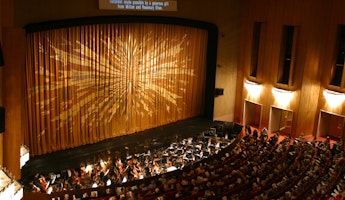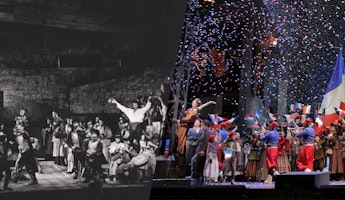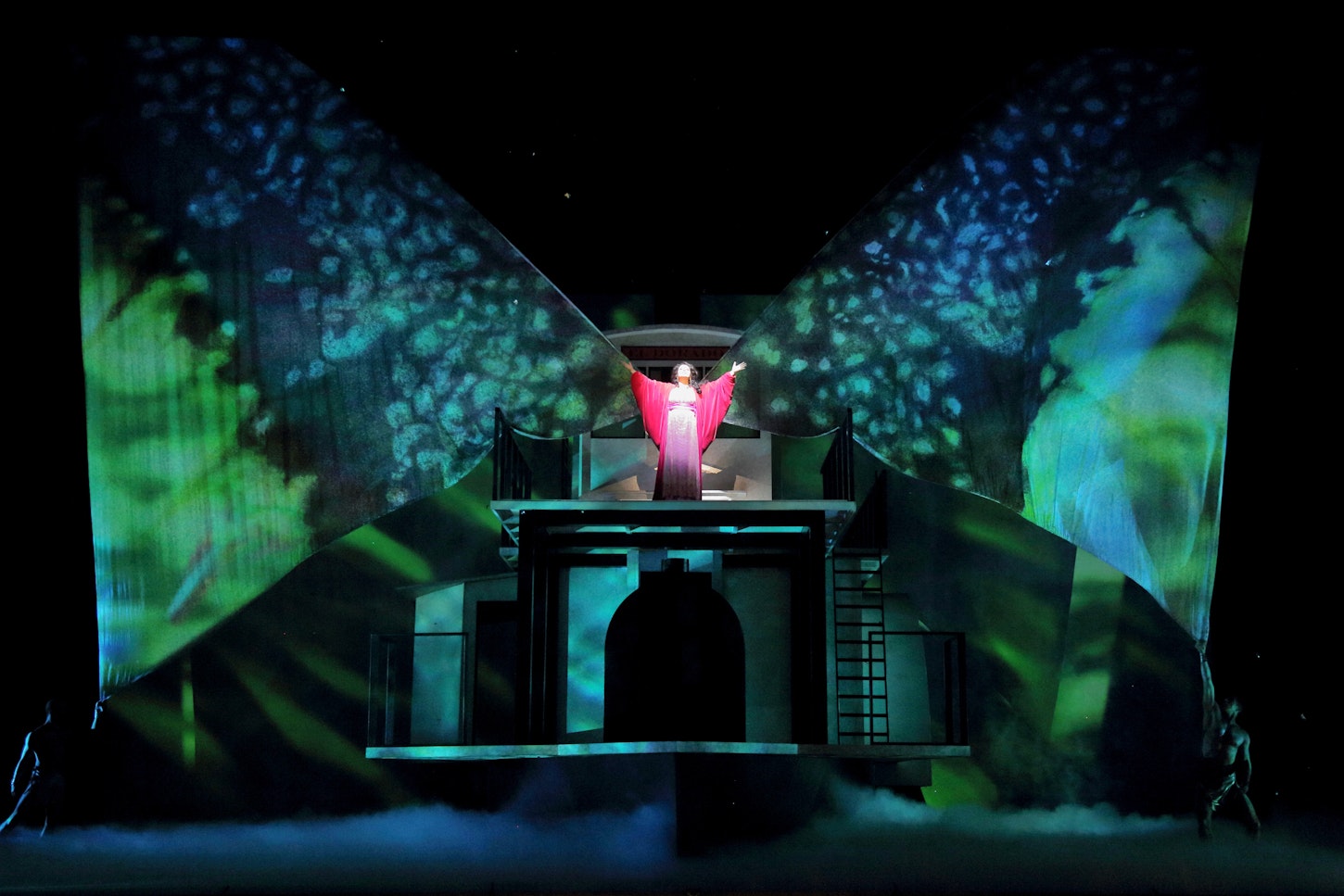Blog
October 1, 2024
Celebrating Operas in Spanish
Hispanic and Latin art—in all its incredible diversity and richness—has had a profound influence on culture in the United States. That influence extends to opera as well, both in the past and present, as Hispanic and Latin composers have given us some of the most exciting operas in recent memory. For Hispanic Heritage Month this year, we wanted to look at some operas by Latin and Hispanic composers that have made an impact in the opera house, with a special appreciation for some modern works that are paving the way for the future of the art form, two of which we’ll have the honor of presenting in 2025.
La purpura de la rosa (The Blood of the Rose)
Let's begin this list by talking about the first known opera to be composed and performed in the Americas. The opera was composed by Spanish-born composer Tomás de Torrejón y Velasco Sánchez at the request of the Viceroy of Peru to celebrate the birthday of King Philip V. The story follows the love story between the goddess Venus and the mortal Adonis, whose affair brings out the wrath of Venus’ lover and fellow god Mars. The opera premiered on October 19, 1701, in the Palace of the Viceroy in Lima, Peru. It wouldn’t reach the United States until June 26, 1992, when it was performed by a Baroque ensemble in Chicago, and it has had several productions around the world since then. It’s an undeniable monument of opera history, ushering in the arrival of opera in the Americas.
El Ultimo Sueno de Frida y Diego (The Last Dream of Frida and Diego)
Moving on to an opera that was a huge hit when it graced our stage in 2023, El último sueño de Frida y Diego brings two of Mexico’s greatest artists, the painters Frida Kahlo and Diego Rivera, back to life. Composed by Gabriela Lena Frank with a libretto by Pulitzer Prize winner Nilo Cruz, the opera depicts a fictionalized imagining of the widowed Rivera’s final days and the inner battle that his deceased wife Kahlo goes through in the land of the dead deciding if she could forgive him for his mistreatment of her and aid him in his final moments. What unravels is a moving spiritual journey that is also a celebration of two of the most influential Latin artists of all time.
Bel Canto (Beautiful Singing)
Speaking of Nilo Cruz, we want to highlight another opera where he was the librettist. Bel Canto, which premiered at Lyric Opera of Chicago in 2015, was composed by Peruvian composer Jimmy López Bellido and is based on the 2001 novel of the same name by Ann Patchett. The novel was a perfect choice for an opera adaptation since it follows an opera singer—a role premiered by soprano Danielle de Niese—who finds herself trapped in a hostage situation while performing for a wealthy industrialist in South America. The libretto is incredibly unique since it features multiple languages such as Spanish, English, Japanese, Russian, German, French, Latin, Italian and Quechua.
Florencia en el Amazones (Florence in the Amazon)
Next is an opera that’s near and dear to us, the romantic and magical Florencia en el Amazones by Mexican composer Daniel Catán. The opera originally premiered at the Houston Grand Opera in 1996 then made its west coast premiere here in 1997 and was revived in 2014. This opera was a joint commission of LA Opera, Houston Grand Opera and Seattle Opera and was the first Spanish-language opera ever commissioned by major American opera houses. The story takes major influence from iconic Columbian author Gabriel García Márquez, who popularized “magical realism,” the depiction of unreal or strange events as something common in everyday life. The opera follows opera diva Florencia Grimaldi on a magical journey along the Amazon River in search of her first lover. Last year, the Metropolitan Opera had a huge hit on its hands when it presented Florencia, the first Spanish-language opera performed there in nearly a century.
Ainadamar (Fountain of Tears)
Here’s an opera that we can’t wait to have on our stage this spring. Ainadamar was created by Argentinian composer Osvaldo Golijov. The libretto is by acclaimed playwright David Henry Hwang and was translated into Spanish by the composer. The opera tells the story of Spanish playwright and poet Federico García Lorca through the eyes of his muse, the actress Margarita Xirgu, after Lorca had been assassinated. Golijov deftly incorporates flamenco and rumba rhythms into his score, with the added flair of a flamenco guitar in the orchestra and a flamenco singer in one of the leading roles. The result is a uniquely thrilling opera that sheds light on one of Spain’s most tragic figures. You can see Ainadamar on our mainstage when it opens here on April 26th, click here for tickets.
Maria de Buenos Aires (Maria of Buenos Aires)
Where Ainadamar merged opera with flamenco, Maria de Buenos Aires combines opera with another iconic Hispanic genre, tango. The opera was created by the great Argentinian tango composer Astor Piazzolla with a libretto by Horacio Ferrer. It’s an opera that has been performed frequently since its premiere in Buenos Aires in 1968. The surreal story follows the life of a sex worker named Maria in the first half and then portrays events after her death in the second half. One interesting tidbit is that Piazzolla wrote the orchestration so it could be played by his own quintet, with only three vocalists required to play all the roles, meaning the opera could be performed on a small scale.
Las tres mujeres de Jerusalén (The Three Women of Jerusalem)
We’ll end this list with an opera that we commissioned and first presented in 2022, which we will have the pleasure of reviving later this season. The Three Women of Jerusalem was composed by Carla Lucero, who also wrote the libretto, and it follows the story of the three women who weep for Jesus as He is forced toward the crucifixion. While its inspiration came from the New Testament, the opera aims to tell a motivational and inspirational story that is truly universal. Presented at the Cathedral of Our Lady of the Angels, this opera is a perfect showcase for our Community Opera program—where we bring in aspiring performers around LA to put on an opera—with its cast of hundreds, and we can’t wait to see it again this spring. For more information on the upcoming production click here.








/03-cosi/_dsc0996_pr.jpg?format=auto&fit=crop&w=345&h=200&auto=format)


















